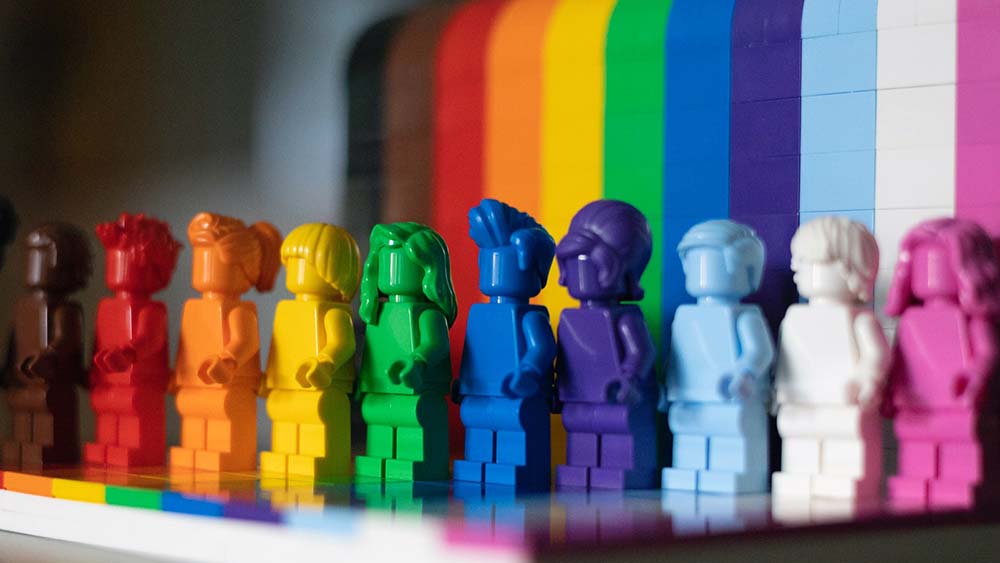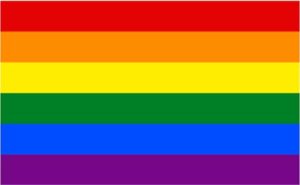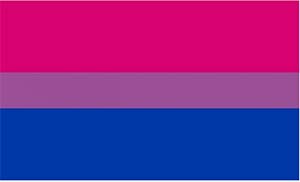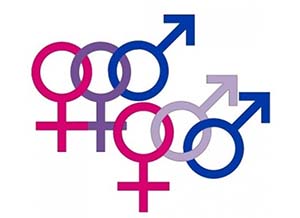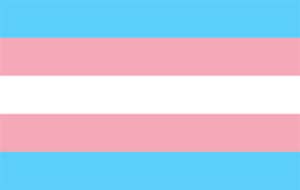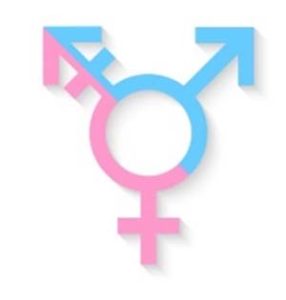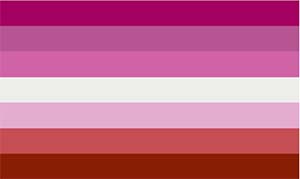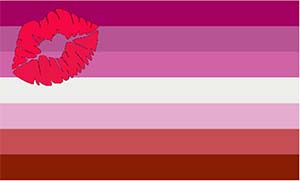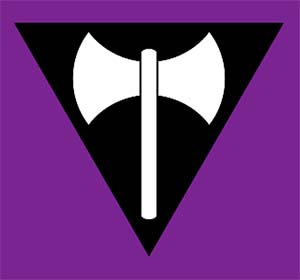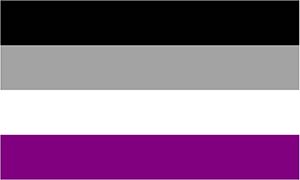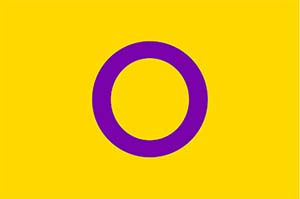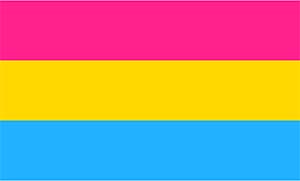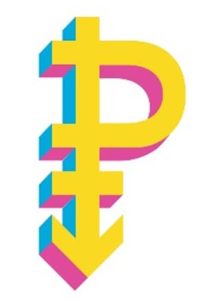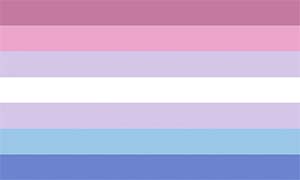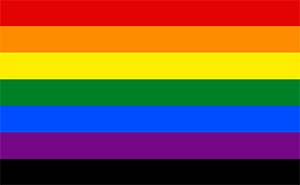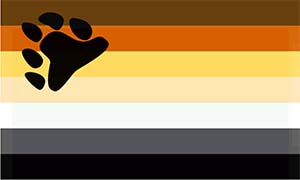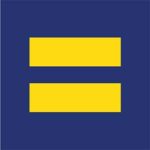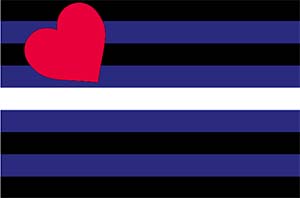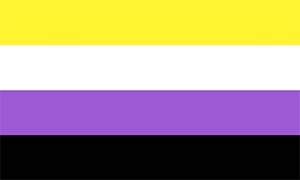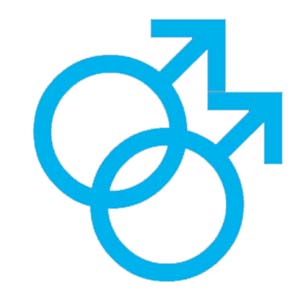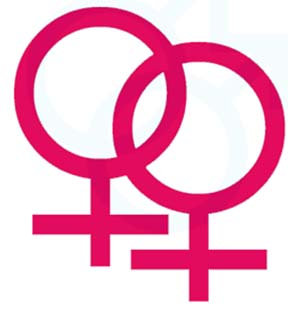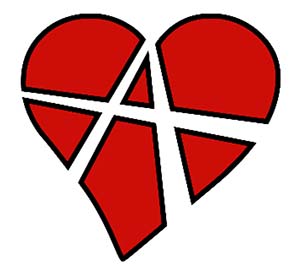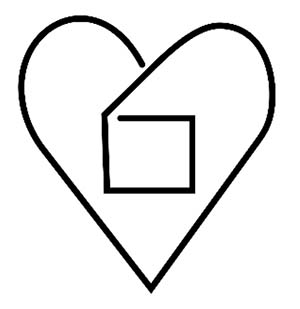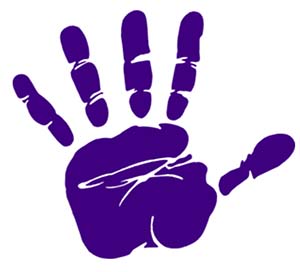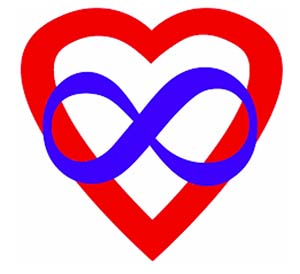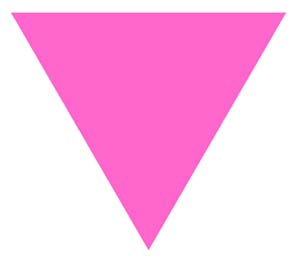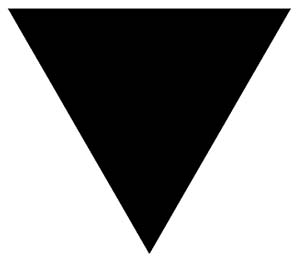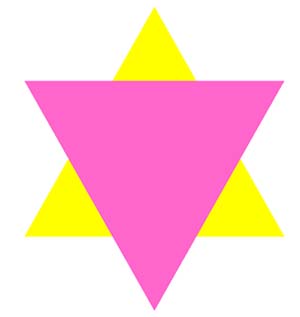Nowadays, you’ll see many signs worn by men and women to symbolize their gender identity or gender expression. These graphic representations come in all shapes and colors and have different meanings. Let’s take a look at some of the most common LGBTQIA pride flags and gender symbols to see what they mean:
Table Of Contents
- LGBT Pride Flag (Rainbow Flag)
- Bisexual Pride
- Transgender Pride Flag
- Lesbian Pride
- Asexual Flag
- Intersex Flag
- Pansexuality
- Bigender Flag
- Victory Over AIDS Flag
- Bear Culture Flag
- Human Rights Campaign Flag
- Leather Flag
- Non-binary Flag
- Lambda Symbol
- Double Male/Gay Pride/Gay Male Symbol
- Double Female Symbol
- Relationship Anarchy
- Love Outside the Box
- Purple Hand
- Unity of Love
- Nazi Badges
LGBT Pride Flag (Rainbow Flag)
One of the most famous gender symbols is the Rainbow Flag. It was created by Gilbert Baker for the Gay Freedom Celebration in San Francisco in 1978, and the LGBTQ community has widely adopted it since then. It’s one of the most recognizable LGBT symbols today and is widely seen in your local pride parade.
The flag has eight colors, each with a unique meaning; red (life), orange (healing), yellow (sun), green (nature), turquoise (art), indigo (harmony), violet (soul), and pink (sexuality).
Bisexual Pride
Designed by Michael Page and first unveiled in 1998, the Bisexual Pride Flag has a magenta stripe on top representing the attraction to a person of the same gender. The bottom has a blue line representing the attraction to a person of the opposite gender and the smaller lavender band between them represents attraction to both genders.
Bisexual pride also has a symbol. The bisexual person is depicted in the middle, entwined by the Venus and Mars sex symbols, representing people attracted to both genders.
Transgender Pride Flag
Monica Helms designed the Transgender Flag in the year 2000. The flag has five horizontal stripes (light blue, pink, white, pink, and light blue). Blue is the traditional color for baby boys, pink is the traditional baby girls color, and white is for those transitioning, intersex, and neutral or no gender.
The most recognizable transgender pride symbol is the merging of Venus and Mars, putting them in the same sphere. This symbol was created by Holly Boswell and represents both the male and female parts innate in a transgender person.
Lesbian Pride
Originally known as ‘The Lipstick Lesbian Flag’ and first introduced by Sean Campbell. The Lesbian Pride flag has six colored horizontal stripes (three pink and three red), a white bar in the middle, and sometimes a kiss mark in the flag’s upper left corner. The dark orange stands for gender non-conformity
The Labrys is the symbol most commonly used by the lesbian community. This double-sided ax is associated with the goddess Artemis and the Amazons of ancient Greece. The Labrys lesbian flag symbolizes strength, empowerment, and independence.
Asexual Flag
Introduced in 2010, the Asexual Pride Flag has four stripes and represents those with little or no sexual attraction to other people. Black for asexuality, grey stripe for the ‘grey area’ between sexual and asexual, white for sexuality, and violet to represent the community.
Intersex Flag
Created in 2013 by Intersex Human Rights Australia, it represents people with not completely binary sex characteristics. The Intersex flag has a yellow field with a purple circle in its center. Yellow and purple are gender-neutral colors, and the ring stands for unbrokenness, wholeness, and completeness of potential.
Pansexuality
The Pansexual Pride Flag has three colors: pink, which represents vagina owners, blue for penis owners, yellow for the non-binary, gender fluid, and bigender. This flag is for those attracted to anyone in the gender spectrum, regardless of sex and gender.
The pansexual symbol is a ‘P’ with a tail that merges the Venus and Mars symbols. This symbol represents attraction to all people independent of gender and sex.
Bigender Flag
The Bigender Pride Flag represents those who have two genders. It has seven stripes and four colors (purple, pink, blue, and white). The white bar in the center represents non-binary identities, the purple for the combination of gender identities, the blue for masculinity, and the pink stripe for femininity.
Victory Over AIDS Flag
It’s a modified rainbow flag with a black stripe added at the bottom. The community will only remove the black strip once the researchers find a cure for AIDS. A San Francisco-based group first suggested this concept, and today, the LGBT community uses it to pay homage to all people who lost their lives due to AIDS.
Bear Culture Flag
Craig Byrnes created the Bear Flag with seven stripes of ursine-related colors (brown, light brown, lighter brown, light yellow, white, grey, and black). Furthermore, on the upper left corner is a black bear paw print representing those who belong to the bear culture (masculine, buff, and hairy).
Human Rights Campaign Flag
This flag is one of the most recognized pride flags in the gay and lesbian community. It consists of a deep blue background and a yellow equal sign in the center that stands for equality.
Leather Flag
More associated with kinks than sexual orientation, the leather flag or the ‘black and blue with love flag’ has nine stripes (four blacks and blues, and a white stripe at the center) representing leather and sex. The heart in the upper left corner symbolizes love.
Non-binary Flag
Kye Rowan created the Non-Binary flag with four stripes (yellow, white, purple, and black). Yellow stands for those living outside the gender binary, white for all genders, purple for genders that are a mix of male and female, and black for those identifying not to have a gender at all.
Lambda Symbol
This symbol was chosen in 1970 during the Gay Activist Alliance because of its historical association with the Greek warriors who carried the Lambda flag (which is the Greek letter L). Those ancient warriors were accompanied into battle by their male lovers.
Double Male/Gay Pride/Gay Male Symbol
This sexuality symbol consists of two overlapping Blue Mars symbols (the symbol for man), symbolizing a man loving another man.
Double Female Symbol
This gender symbol has two overlapping Pink Venus (the symbol for women) and symbolizes a woman loving another woman.
Relationship Anarchy
Can you see the “A” in the heart? It symbolizes Relationship Anarchy (or RA). RA denies relationship hierarchies and primarily stands for autonomy.
Love Outside the Box
Love Outside the Box is a box that opens up to make a heart. This sexuality symbol represents the non-monogamy movement, i.e., individuals who engage in polyamorous relationships.
Purple Hand
Inspired by the Black Hand exaction of gangsters and mafias, the Purple Hand was utilized by members of the Gay Liberation Front during a protest in San Francisco back in 1969. They stamped these purple handprints onto buildings to demonstrate gay power.
Unity of Love
Another significant symbol in the LGBTQ community is the Unity Of Love. It has a blue infinity sign on top of a red heart and stands for pride, unity, and allegiance.
Nazi Badges
Pink Triangle
Gay men were required to wear the pink triangle in concentration camps during the Nazi regime, and it’s now a symbol for gay rights and against oppression.
Black Triangle
Lesbians were required to wear this sign during the Nazi regime. Today it’s a symbol for vulva owners who don’t adhere to normative female behaviors.
Pink and Yellow Triangles
Jewish members of the LGBTQ community were required to wear this sign in concentration camps during the Nazi Third Reich regime. It’s an upside-down pink triangle on top of a yellow triangle.
Rachel
- 8 Best Sex Positions For Small Penis Sizes - April 17, 2024
- 9 Crazy Sex Positions To Spice Up Your Love Life! - April 15, 2024
- 10 Best Anal Sex Positions | For Straight & Same-Sex Couples - April 14, 2024
